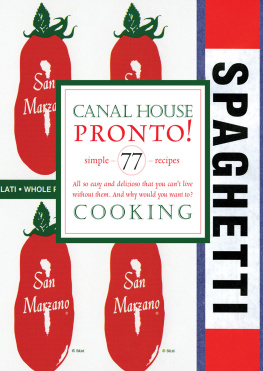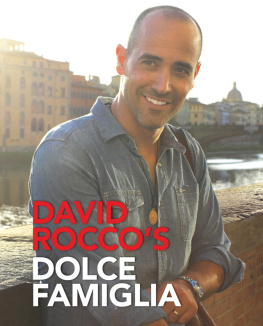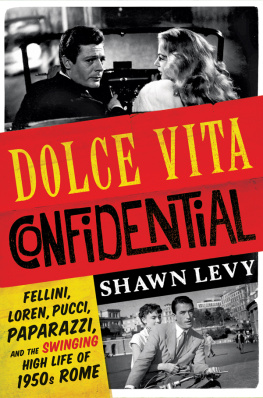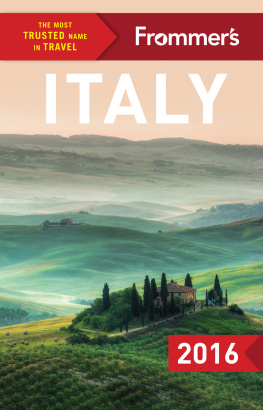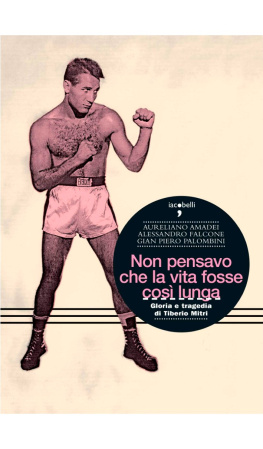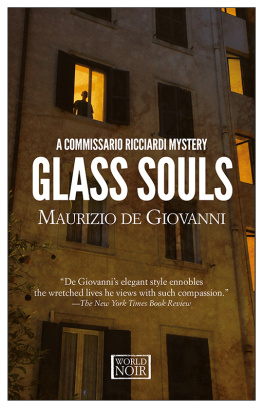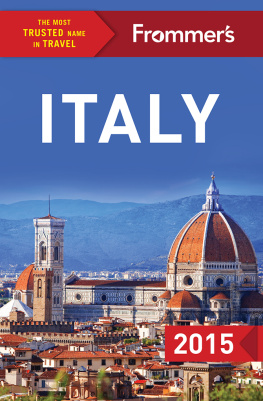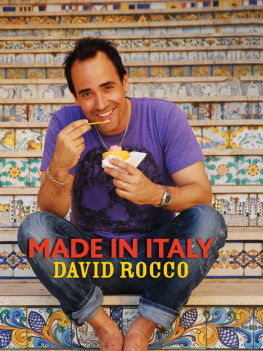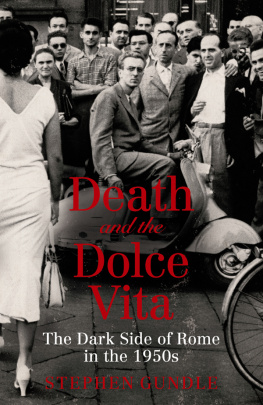Ricciardi Alessia - After la dolce vita: a cultural prehistory of Berlusconis Italy
Here you can read online Ricciardi Alessia - After la dolce vita: a cultural prehistory of Berlusconis Italy full text of the book (entire story) in english for free. Download pdf and epub, get meaning, cover and reviews about this ebook. City: Italy;Stanford;California, year: 2012, publisher: Stanford University Press, genre: Romance novel. Description of the work, (preface) as well as reviews are available. Best literature library LitArk.com created for fans of good reading and offers a wide selection of genres:
Romance novel
Science fiction
Adventure
Detective
Science
History
Home and family
Prose
Art
Politics
Computer
Non-fiction
Religion
Business
Children
Humor
Choose a favorite category and find really read worthwhile books. Enjoy immersion in the world of imagination, feel the emotions of the characters or learn something new for yourself, make an fascinating discovery.

- Book:After la dolce vita: a cultural prehistory of Berlusconis Italy
- Author:
- Publisher:Stanford University Press
- Genre:
- Year:2012
- City:Italy;Stanford;California
- Rating:3 / 5
- Favourites:Add to favourites
- Your mark:
- 60
- 1
- 2
- 3
- 4
- 5
After la dolce vita: a cultural prehistory of Berlusconis Italy: summary, description and annotation
We offer to read an annotation, description, summary or preface (depends on what the author of the book "After la dolce vita: a cultural prehistory of Berlusconis Italy" wrote himself). If you haven't found the necessary information about the book — write in the comments, we will try to find it.
After la dolce vita: a cultural prehistory of Berlusconis Italy — read online for free the complete book (whole text) full work
Below is the text of the book, divided by pages. System saving the place of the last page read, allows you to conveniently read the book "After la dolce vita: a cultural prehistory of Berlusconis Italy" online for free, without having to search again every time where you left off. Put a bookmark, and you can go to the page where you finished reading at any time.
Font size:
Interval:
Bookmark:
Stanford University Press
Stanford, California
2012 by the Board of Trustees of the Leland Stanford Junior University.
All rights reserved.
This book has been published with the support of a Research Grant from the University Research Grants Committee at Northwestern University.
No part of this book may be reproduced or transmitted in any form or by any means, electronic or mechanical, including photocopying and recording, or in any information storage or retrieval system without the prior written permission of Stanford University Press.
Printed in the United States of America on acid-free, archival-quality paper
Library of Congress Cataloging-in-Publication Data
Ricciardi, Alessia, author.
After la dolce vita : a cultural prehistory of Berlusconis Italy / Alessia Ricciardi.
pages cm
Includes bibliographical references and index.
ISBN 978-0-8047-8149-7 (cloth : alk. paper) ISBN 978-0-8047-8150-3 (pbk. : alk. paper) ISBN 978-0-8047-8258-6 (e-book)
1. Politics and cultureItalyHistory20th century. 2. ItalyIntellectual life20th century. 3. ItalyHistory1976- I. Title.
DG581.R53 2012
945.092dc23
2011052268
Typeset by Bruce Lundquist in 11/13.5 Adobe Garamond
AFTER LA DOLCE VITA
A Cultural Prehistory of Berlusconis Italy
Alessia Ricciardi
STANFORD UNIVERSITY PRESS
STANFORD, CALIFORNIA
C ultural Memory in the Present
Mieke Bal and Hent de Vries, Editors
for Michele
Contents
Acknowledgments
The completion of this book was not an easy task, for a variety of reasons, some of which were intellectual and some more personal. Now that the work is done, I would like to thank properly everyone who has helped me along the way.
I am grateful to my colleagues in the Department of French and Italian at Northwestern University for their ongoing sympathy and camaraderie. In particular, I wish to thank Scott Durham, Michal Ginsburg (who I hope will never retire), Paola Morgavi, Nasrin Qader, Marco Ruffini, Tom Simpson, Domietta Torlasco, and Jane Winston. My appreciation is due as well to the graduate students who attended my seminars on Italys anthropological mutation and on Pasolini at the University of California, Berkeley. Their sparkling conversation made the process of thinking and writing about several of the questions in this book seem a far less solitary endeavor. I wish specifically to thank Rossella Carbotti, Rebecca Falkoff, Janaya Lasker Ferretti, and Marina Romani for their incisive and amicable contributions. Warmth, delight, and encouragement were provided by a number of friends, including Kevin Bell, Patricia and Sophia Dailey, Laurent Debreuil, Laurent Ferri, Paola Marrati, Leonor Marrati-Gunoun, Mary Murrell, Armando Solis, Jared Stark, Mark Strand, and my brother, Alfonso.
An emphatic word of thanks to Penelope Deutscher, whose personal and intellectual vivacity, wise counsel, and general marvelousness have sustained me through difficult moments. I am indebted as well to Franca, Orsola, and Domenico Fraternali for their enduring friendship and affection.
My additional gratitude goes to everyone at Stanford University Press who has been involved in the publication of this book, most notably Emily Jane Cohen for her invaluable and gracious advice, Hent de Vries for his interest in the project, Sarah Crane Newman for her unfailing helpfulness, Tom Finnegan for his judicious copy editing, and my exceptionally kind and generous reader, Roberto Dainotto, whose suggestions and comments I shall treasure.
A portion of was delivered as a talk at the University of California, Berkeley, in 2006. I thank Albert Ascoli and Barbara Spackman for their observations and comments on the material.
The University of California, Berkeley, granted me a leave of six months in 2009 that was instrumental to the completion of the project. I acknowledge with great appreciation this assistance.
Two important presences in my daily life deserve special recognition. The first and most crucial is that of Chris Yu, to whom I give my love for all his support and for making continuous merriment of our time together. The second is that of my large and affable cat, Rocco.
Finally, I wish to acknowledge my father, Michele, whom I lost while writing this book. Kindness and courage were equally embedded in him; I was extraordinarily lucky to have him in my life. It is to his memory that I dedicate After La Dolce Vita.
Introduction
The Italian filmmaker Michelangelo Antonionis La notte captures the historical conditions of its moment with an incisive eye, indeed with an eerie prescience. Released in 1962, La notte depicts the discontent of a successful writer named Giovanni Pontano and his wife, Lidia. The action of the film begins on a day of celebration for the publication of his latest novel, the ominously titled The Season, and ends at dawn of the following day in the wake of an all-night party at the house of the Milanese industrialist Gherardini. As the party winds down to its conclusion, Gherardini, a member of the nouveau riche and a man with an astute grasp of the latest techniques of communication, offers Pontano a job as an executive in charge of telling the companys story to its employees. After refusing this proposition, the author departs with Lidia. As they wander away from the villa on foot, she reveals in conversation that she no longer loves him.
This final scene, however, is only the epilogue of a narrative that starts with the couples visit to their friend Tommaso Garani, who is dying of cancer in a hospital. A colleague of Pontano and a former suitor of Lidia, Tommaso also enjoys the dubious distinction, in the milieu portrayed by the film, of being an Adorno scholar, whose latest article on the German philosopher Pontano praises in a passing remark. Translations of Theodor Adornos writings, we should recall, began to appear in Italy in the mid-1950s and 1960s, starting with Minima Moralia in 1954. In roughly the same period, Silvio Berlusconi launched his career as a real estate developer in Milan, where he graduated from the Universit Statale in 1961, raised the money for his first housing developments on via Alciati in 1962 and in the suburb of Brugherio in 1964, and went on to build the enormous gated community of Milano 2 for a residential population of more than 10,000 in the 1970s. By rapidly expanding his investments to cable television outlets such as Telemilano; the daily newspaper Il Giornale; Italys largest publishing house, Mondadori; and a vast array of corporate assets in media, finance, advertising, insurance, and other industries through holding companies such as Fininvest and Mediaset, Berlusconi succeeded in establishing a solidly conservative counter-counterculture. This ethos could not be regarded as clerical-fascist, to invoke Pier Paolo Pasolinis term, in the manner of the Democrazia Cristiana but rather coincided with growing acceptance of the most spectacular forms of consumerism. For Pasolini, such an attitude of conformism or acquiescence to the sameness of mass society was the hallmark of the anthropological mutation that he analyzed brilliantly in the late essays collected in his books Corsair Writings (1975) and Lutheran Letters (1976).
My purpose in After La Dolce Vita: A Cultural Prehistory of Berlusconis Italy is not to try to add to the already substantial literature analyzing Berlusconis rise to power. Rather, I am interested in exploring how the leftist intelligentsia, the Giovanni Pontanos of Italy, managed in a few decades, and most decisively from the mid-1970s through the 1980s, to lose the position of intellectual and social centrality that was handed to them after the defeat of Fascism and the end of the Second World War. The unique potential of the left in the postwar period ensued from two factors. The first was the critical legacy derived from publication of the celebrated Marxist philosopher Antonio Gramscis corpus of writings over several decades, most notably the
Next pageFont size:
Interval:
Bookmark:
Similar books «After la dolce vita: a cultural prehistory of Berlusconis Italy»
Look at similar books to After la dolce vita: a cultural prehistory of Berlusconis Italy. We have selected literature similar in name and meaning in the hope of providing readers with more options to find new, interesting, not yet read works.
Discussion, reviews of the book After la dolce vita: a cultural prehistory of Berlusconis Italy and just readers' own opinions. Leave your comments, write what you think about the work, its meaning or the main characters. Specify what exactly you liked and what you didn't like, and why you think so.

